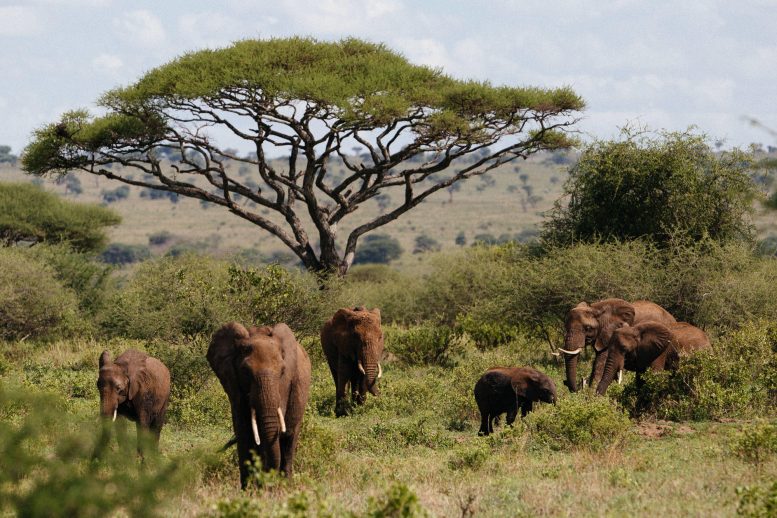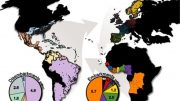
Elephants (megaherbivores) in Tarangire National Park, Tanzania, Africa. The diversity and abundance of such giants were much greater in the past than it is today. Credit: Juan Cantalapiedra
Faysal Bibi from the Museum für Naturkunde in Berlin, and Juan L. Cantalapiedra from the University of Alcalá in Madrid, leveraged thousands of fossil teeth measurements to map out the size and population of large African mammals (more than 15 kg (33 lbs)) throughout the last 10 million years.
Despite various challenges linked to preservation in the fossil record, the research uncovered a striking similarity in the correlation between an animal’s size and its population density in both fossil and existing communities. This suggests that the essential ecological mechanisms that shape today’s living communities can also be observed in the fossil record.
Above 45 kg, the researchers found evidence for decreasing abundance with increasing size, a pattern that aligns with the ecological ‘rule of metabolic scaling’, whereby larger species have lower population densities compared to smaller ones. A deviation from the predicted ecological pattern was that mammals between ~15 (33 lbs) and 45 kg (99 lbs) were far less numerous than expected, both in living and fossil communities. They interpreted this as a signature of savanna habitats (where monkeys and small forest-living antelopes are rare).
The big surprise came when the researchers examined how size-abundance distributions changed over time. They discovered that earlier communities, older than ~4 million years ago, had a considerably higher number of large-sized individuals and a greater proportion of total biomass in larger size categories, than did younger communities.
The high abundance of large individuals in these fossil African communities — with some individual elephants reaching sizes over 10 tons — is unparalleled in ecosystems today. Since that time, there has been a gradual loss of large-sized individuals from the fossil record, reflecting the long-term decline of late Pliocene and Pleistocene large mammal diversity, and resulting in the impoverished and ‘miniaturized’ communities we know today.
The study confirms recent work arguing for the deep-time antiquity of African megafaunal losses and challenging the idea that the decline of African megafauna was primarily driven by human activities.
While the spread of humans across the globe during the late Pleistocene and Holocene (the last ~100,000 years) coincided with the major extinction of many large animals, the research supports the idea that megafaunal losses in Africa began much earlier, around 4 million years ago, and long before humans learned to engage in efficient hunting. Instead, the study highlights environmental factors, such as the long-term decrease in global temperatures and the expansion of tropical grasslands, as potential drivers of megafaunal extinctions.
The study also found that the loss of large individuals and the restructuring of biomass distributions in African large mammal communities could have been linked to decreases in primary productivity. Using an established relationship between the types of mammalian tooth shapes (morphological traits) and plant productivity (net primary productivity) today, the researchers calculated productivity for African communities in the past.
They found an approximately two-thirds decrease in productivity since the Late Miocene (> 5 million years ago), a pattern observed globally, and that could have significantly diminished the carrying capacity of large mammal communities, leading to reduced diversity and accelerated extinction of large species.
The research opens new avenues for understanding the dynamics of ecosystems and the complex interactions between individuals, species, and their environment. By analyzing fossil abundance data and incorporating size-based approaches, scientists can gain valuable insights into the ecological dynamics underlying extinction.
The publication of this scientific paper marks a significant milestone in our understanding of African megafaunal extinctions and the restructuring of ecosystems over geological time scales. Bibi and Cantalapiedra’s findings have the potential to inform conservation efforts and enhance our ability to predict and manage the consequences of biodiversity loss in the face of environmental change.
Reference: “Plio-Pleistocene African megaherbivore losses associated with community biomass restructuring” by Faysal Bibi and Juan L. Cantalapiedra, 8 June 2023, Science.
DOI: 10.1126/science.add8366









Be the first to comment on "Lost Giants: New Study Uncovers Decline of African Megafauna"